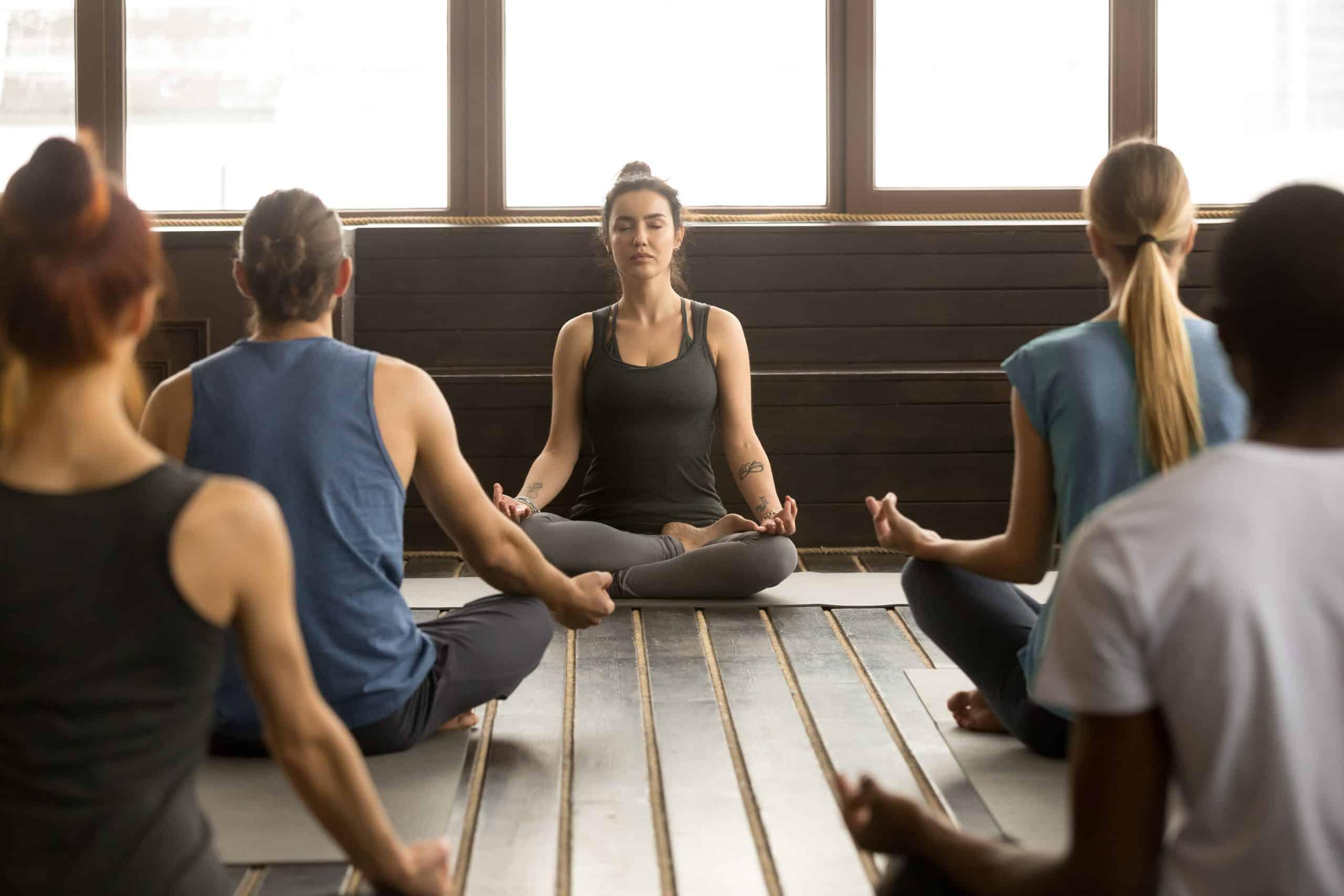Are you an avid Yogi trying to learn yoga online during this COVID time? Or are you a yoga teacher looking to open an online Yoga studio for international students? If your answer is yes, then be ready to get your hands dirty with this English Speaking Practice Topic For Yogis!
Below, we will give you some questions about Mountain Pose (Tadasana), one of the most practiced poses in yoga. If you don’t know what mountain pose is, it looks like this:

You will be also given some videos, a passage for advanced reading, and a bunch of useful vocabulary to prepare for the speaking session.
Tip: Don’t forget to turn on eJOY eXtension to look up new words in the video subtitles and reading. If you haven’t installed eJOY eXtension, you can install it below for FREE!
Once you have tried answering these questions yourself and had a look at the materials, you can fill in this check-in form to find a speaking partner. If you are new here, you may want to learn more about how the online speaking group works.
Let’s get started!
Questions You Can Ask Your Speaking Partner
You or your partner will play the role of a yoga teacher, and the other one a yoga student.
Questions to ask if you are a yoga student:
- What is mountain pose and how do you do it?
- How does practicing mountain pose benefit me?
- Is there any prop or equipment that can help me to do this pose?
- What time of the day is best to practice this pose?
Questions to ask if you are a yoga teacher:
- Could you tell me the one benefit of mountain pose?
- What do you like about this pose and why?
- How do you feel after doing this pose?
- Why do you think it’s important to practice this pose?
Suggested videos for this topic
Learn the mountain pose – Tadasana
Reading – Mountain pose instructions
Benefits:
- improves posture
- Tones breast tissue
- Reduces premenstrual breast heaviness
- Relieves breast tenderness
- Mobilizes stiff shoulders
- Strengthens the spine
Props:
- 1 non-slip mat
- Wall
To begin, stand on your mat with your feet together, placing equal weight on each foot. Roll your thigh muscles in. Roll the backs of the thighs out. Inhale and lift the sides of your rib cage. As you exhale, roll your shoulders back and down. With your palms facing your sides, lengthen your arms down. Inhale and lift through the crown of the head. Exhale and press down through your heels.
If you have breast discomfort or have undergone recent surgery for breast cancer, be especially mindful of taking support from your back body in this and all the standing poses. Firm your shoulder blades into your back and slide them down toward your waist. Allow the skin on your back to release down over your shoulder blades.
With arms overhead. Practicing with the arms overhead enhances upper torso flexibility by lengthening and strengthening the muscles that connect your arms to your lower back. Stand on your mat as for Mountain Pose. Extend your arms forward, and extend out through your fingers. Draw your upper arm bones back onto the shoulder joints. Then with palms still facing in, raise your arms above your head to create a dynamic extension through the waist, breasts, and shoulders.
Aligning your upper arms with your ears, straighten your elbows and lift some more, lengthening the spinal column upward. Lift evenly into both hands from the inner elbows, and lengthen up through the fingertips. Simultaneously pull your deltoid muscles down onto your shoulder blades. Observe the effect that raising your arms has on the soft tissue around your breasts. Check that the dynamic arm movement doesn’t overpower your experience of the way the breast tissue responds to the stretch.
To come out, exhale and lower your arms forward and down.
(Source: Yoga for breast care: what every woman needs to know – by Bobby Clennell)
Useful vocabulary
Posture (n): the position in which you hold your body
Premenstrual (adj): happening before menstruation
Relieve (v): remove uncomfortable feeling or pain
Mobilize (v): make something ready to act or flexible
Inhale / exhale (v): breath in / breath out
The crown of the head (n): the top of your head
Discomfort (n): the uncomfortable feeling
Mindful (adj): to be focusing on the present moment
Firm (v): to make something stronger
Shoulder blades (n): flat bones on the top of your back
Torso (n): the first main part of your body, not including the head, arms, or legs
The spinal column (or spine) (n): the row of small bones in the middle of the back
Align (v): to arrange something in a straight line with something else
Simultaneously (adv): at the same time
Deltoid muscle (n): the muscle group on top of your shoulders
Soft tissue (n): the part of the body that is not bone, for example, skin or muscle
Dynamic (adj): always moving or changing
Extension (n): the act of increasing the area of activity or lengthening something
A variation (n): a different version of something















